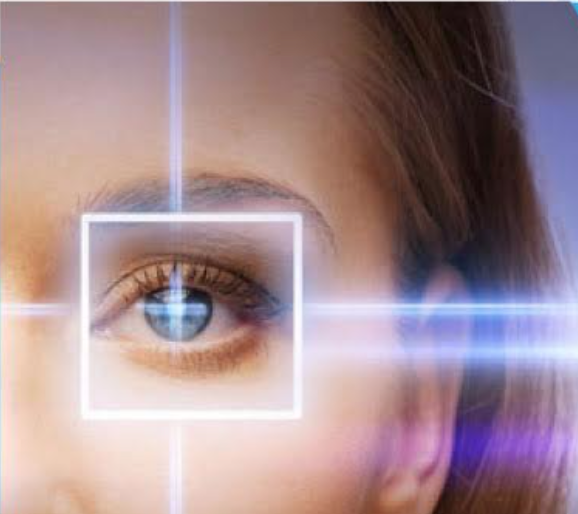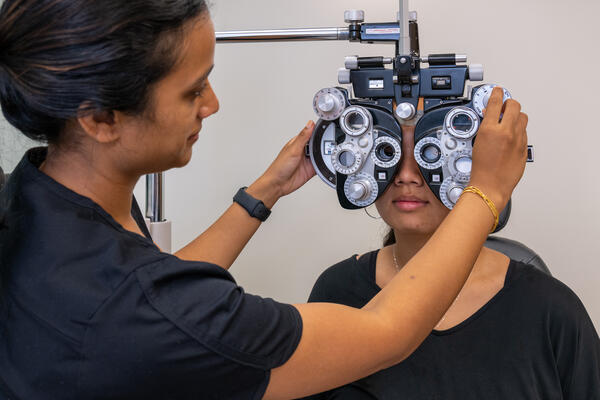Advanced Refractive Surgeries in AL: Explore Choices at Our Clinic
Advanced Refractive Surgeries in AL: Explore Choices at Our Clinic
Blog Article
Checking Out the State-of-the-Art Technologies Utilized for Detecting and Dealing With Eye Conditions
In the realm of ophthalmology, the development of modern technology has dramatically improved the devices offered for diagnosing and dealing with different eye conditions. From advanced imaging technologies that provide in-depth understandings right into eye structures to robotic-assisted procedures that supply unrivaled precision, the landscape of eye treatment is regularly advancing. With the combination of synthetic knowledge in diagnostics, gene therapy innovations, and digital fact rehab, the possibilities for enhancing individual results are increasing at a quick pace. The merging of these innovative innovations holds the guarantee of reinventing the field of ophthalmology, supplying brand-new opportunities for individualized and effective treatments.

Advanced Imaging Technologies
Advanced Imaging Technologies have actually reinvented the area of ophthalmology by providing precise and in-depth visualization of the eye structures. Optical Coherence Tomography (OCT) sticks out as a crucial technology in this realm. OCT utilizes light waves to catch high-resolution cross-sectional photos of the retina, permitting the recognition of minute structural changes. This non-invasive technique help in the very early detection and surveillance of different eye problems such as macular degeneration, diabetic person retinopathy, and glaucoma.
Furthermore, Fundus Digital photography is another crucial tool in ophthalmic imaging. This method includes catching detailed pictures of the rear of the eye, including the retina and optic disc. Fundus Photography helps in recording the development of eye conditions, examining treatment efficiency, and informing clients regarding their eye wellness.

Robotic-Assisted Surgical Treatments
Robotic-assisted surgeries have dramatically progressed the abilities of ocular surgery, introducing a new era of accuracy and effectiveness in treating various eye conditions. By incorporating robotic innovation into surgeries, ophthalmologists can accomplish exceptional precision and control, resulting in boosted client results.
One of the primary advantages of robotic-assisted surgical treatment in ophthalmology is the improved dexterity and stability it provides to cosmetic surgeons. The robotic arms can perform exact movements with a high degree of accuracy, permitting fragile procedures with marginal invasiveness. This degree of accuracy is particularly beneficial in surgical treatments including the retina, where even minor errors can have significant implications for a person's vision.
Additionally, robotic-assisted surgical systems offer real-time imaging and responses to the surgeon, allowing them to make enlightened decisions throughout the procedure. This modern technology boosts the specialist's situational recognition and enables changes to be made quickly, ensuring optimal results for the patient.
Expert System in Diagnostics
With the evolution of innovative technologies improving medical precision in ophthalmic procedures, the combination of Artificial Intelligence in diagnostics has actually arised as an essential development transforming the field of eye treatment. Fabricated Intelligence (AI) formulas are being progressively used to evaluate complicated information from imaging technologies like optical comprehensibility tomography (OCT) and fundus digital photography to help in the very early check my source discovery and precise medical diagnosis of numerous eye conditions. These AI systems can efficiently identify patterns and anomalies in pictures that might not be discernible to the human eye, enabling quicker diagnosis and therapy planning.
AI algorithms can additionally predict disease development, advise customized therapy strategies, and analyze the effectiveness of treatments. By improving the analysis procedure, AI not just enhances the performance of eye care professionals yet likewise enhances individual results by making it possible for prompt interventions. As AI proceeds to advance, its function in diagnostics is expected to broaden, using new possibilities for very early treatment and individualized treatment in the field of ophthalmology.
Genetics Therapy Innovations
In the world of sensory advancements, current strides in genetics therapy technologies have stimulated substantial passion amongst scientists and healthcare professionals alike. Genetics therapy holds enormous pledge in reinventing the treatment of numerous eye problems by targeting the underlying genetic causes. By introducing hereditary material into cells to make up for abnormal genes or to give a missing genetics, gene therapy offers an individualized method to dealing with inherited eye conditions such as retinitis pigmentosa, Leber hereditary amaurosis, and others that were formerly considered untreatable.

As study in genetics therapy continues to advancement, the capacity for tailored therapies for a wider variety of eye conditions expands, providing brand-new hope for patients with genetic eye conditions.
Virtual Fact Rehabilitation
Digital fact recovery has actually become a sophisticated technique in boosting the healing and recovery processes for individuals with different aesthetic problems. hearing service near me. By simulating real-world settings via immersive modern technology, virtual fact supplies an one-of-a-kind system for vision treatment and rehab. This cutting-edge approach enables people to involve in interactive workouts and tasks developed to boost aesthetic skill, deepness perception, eye control, and total aesthetic performance
One secret benefit of digital truth recovery is its ability to tailor treatment programs based upon the particular demands and abilities of each client. Through real-time feedback and surveillance, health care professionals can track progression, change interventions, and give personalized treatment to enhance results. Additionally, online truth modern technology can create a regulated and secure room for individuals to practice aesthetic jobs, overcome obstacles, and build recommended you read self-confidence in a virtual setup prior to transitioning to real-world scenarios.
Final Thought
In verdict, the improvements in imaging modern technologies, robotic-assisted surgeries, expert system diagnostics, gene treatment advancements, and virtual truth rehab have significantly enhanced the diagnosis and treatment of eye conditions. retina service near me. These cutting edge technologies have changed the field of ophthalmology, permitting even more accurate and efficient treatments. As technology proceeds to develop, the future of eye care looks promising with the capacity for much more innovative remedies to improve individual outcomes
In the world of ophthalmology, the development of technology has actually substantially boosted the devices readily available for diagnosing and treating numerous eye problems. Fundus Photography aids in documenting the progression of eye diseases, reviewing treatment effectiveness, and informing people about their eye health and wellness.
Man-made Knowledge (AI) algorithms are being increasingly used to analyze intricate data from imaging technologies like optical comprehensibility tomography (OCT) and fundus photography to aid in the early discovery and precise medical diagnosis of different eye next page problems.In verdict, the improvements in imaging technologies, robotic-assisted surgical procedures, fabricated intelligence diagnostics, gene treatment innovations, and digital fact recovery have actually substantially improved the diagnosis and treatment of eye conditions. As innovation proceeds to develop, the future of eye care looks promising with the capacity for even more cutting-edge remedies to improve person results.
Report this page